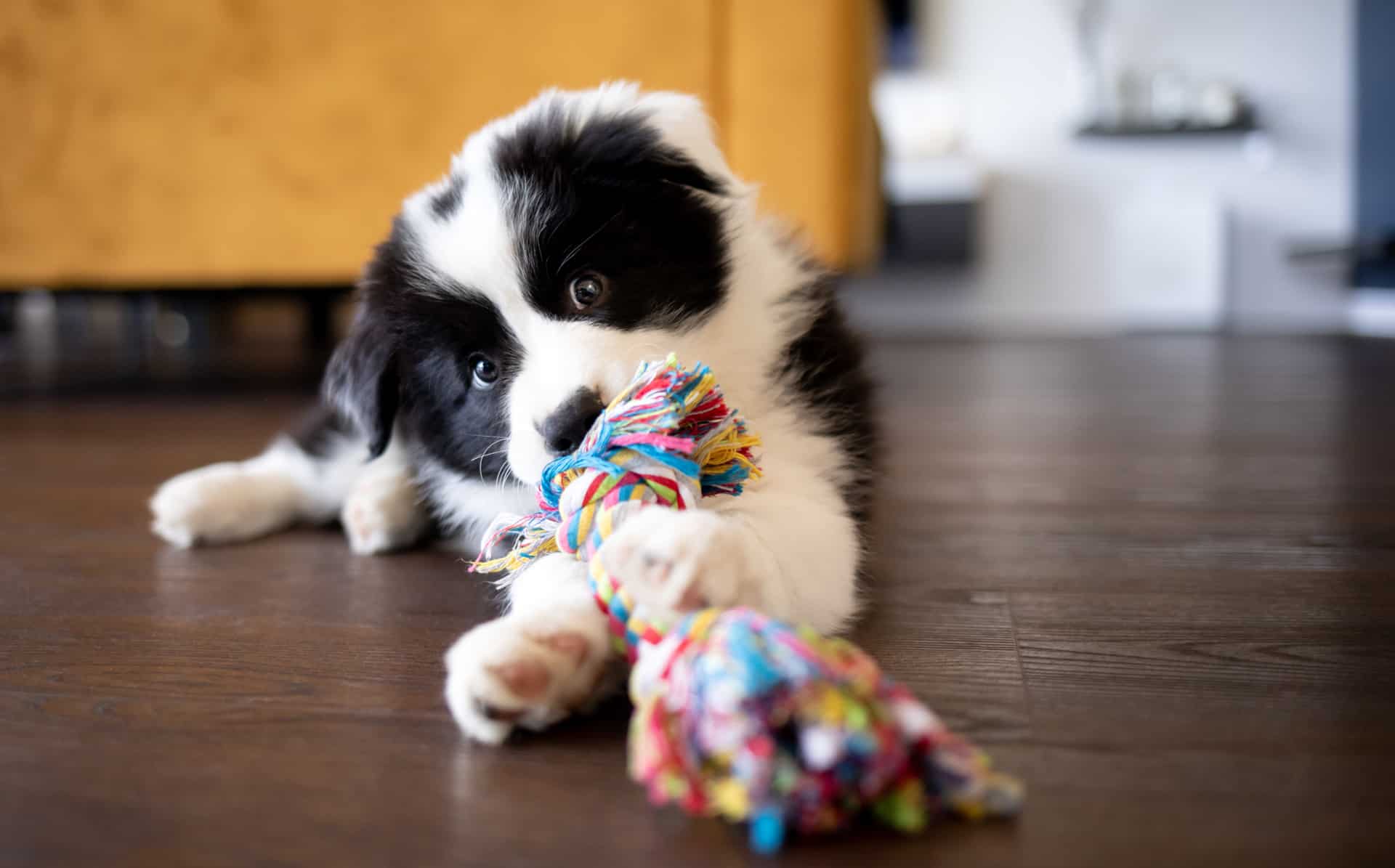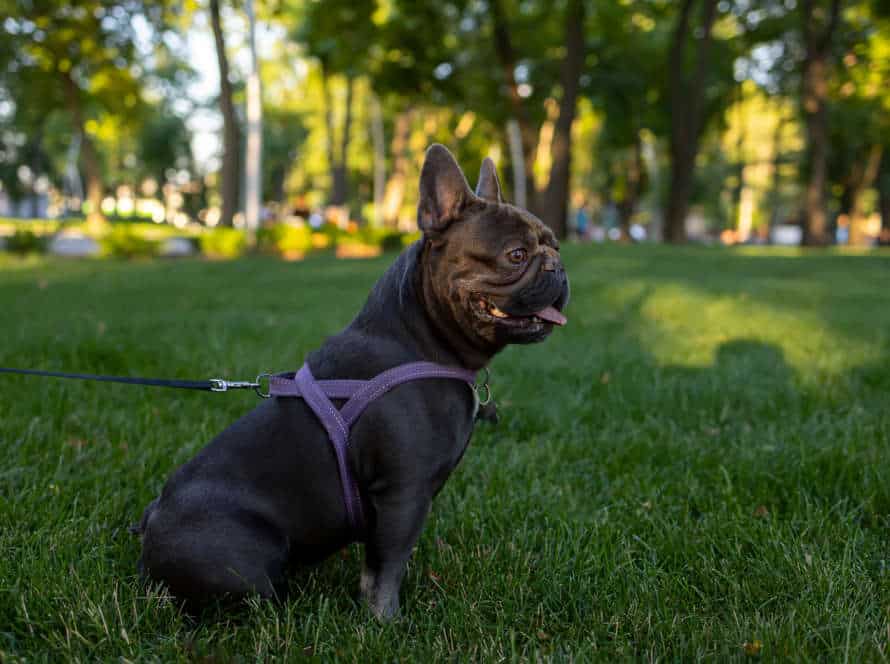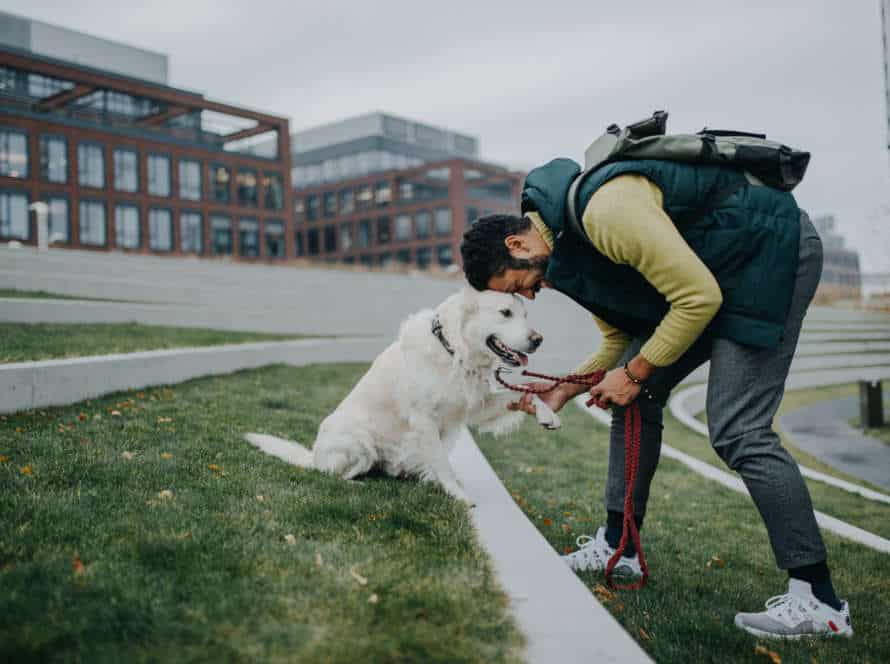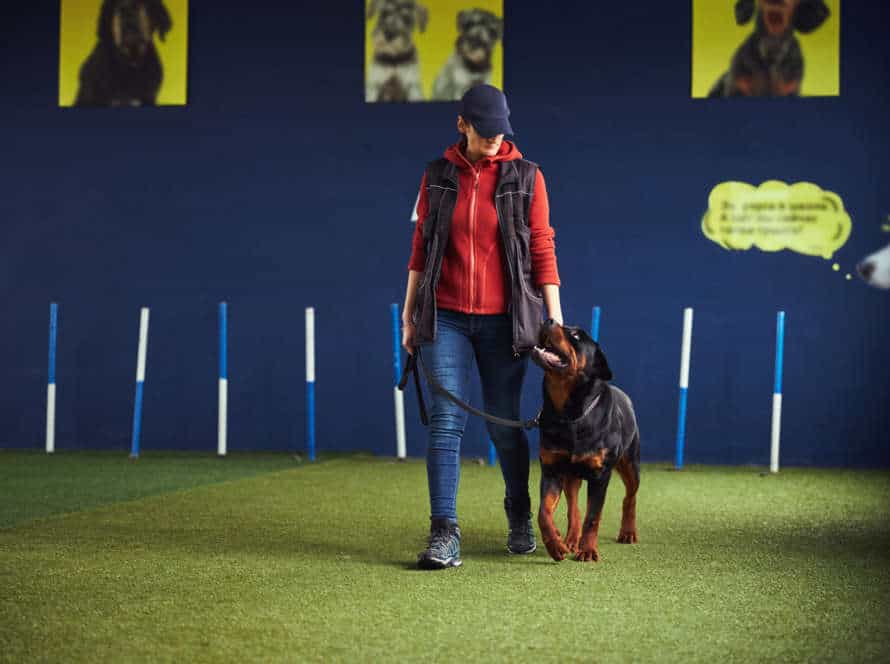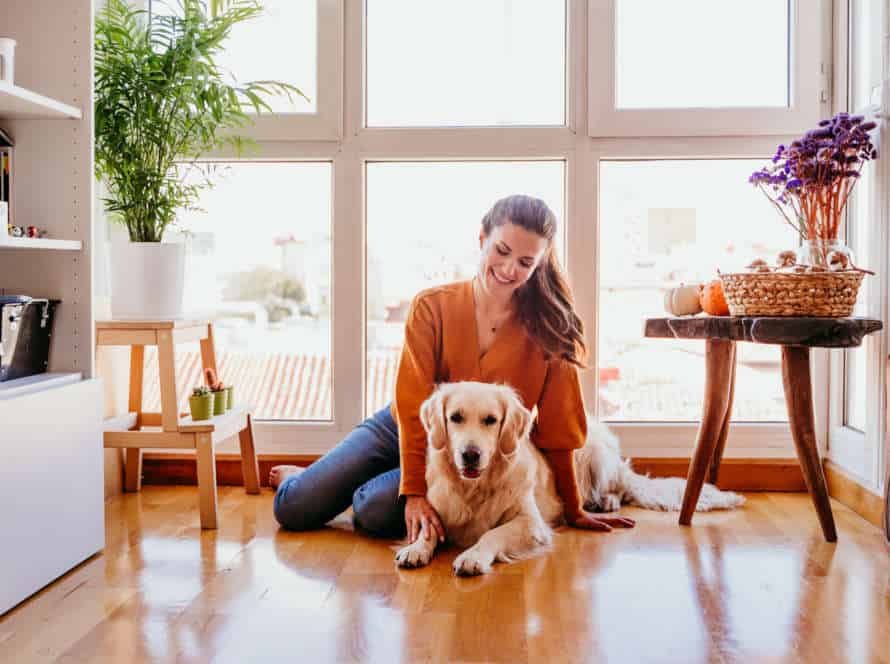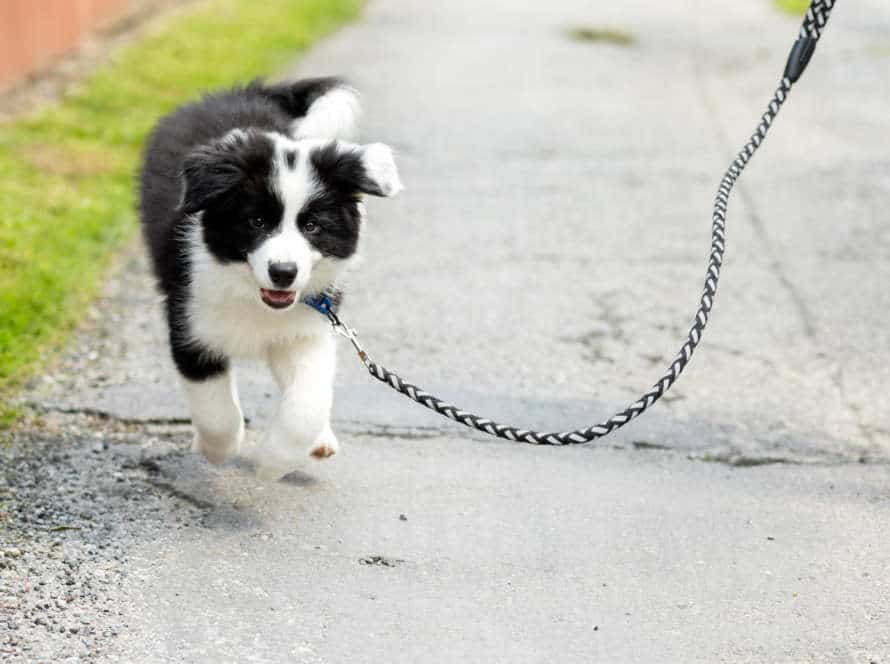Why is bite inhibition important?
Bite inhibition is important for pooches! It’s their skill to control the bite’s strength and stop biting too hard. If a pup does bite, they can adjust the force so they don’t hurt the person or animal they bite. Let’s take a look at why this skill is so important, and how play can help dogs learn it.
Consequences of poor bite inhibition
Bite inhibition is an important ability that each dog must learn. Poor bite inhibition can lead to physical harm to humans and other animals, social seclusion, or even death; plus, legal issues may arise.
Play is key for teaching dogs how to inhibit their bites. Through play, puppies learn to control the intensity of their bites, understand non-verbal cues from their littermates, and socialize.
Owners and trainers can help build bite inhibition in their dogs by playing with them, training them with positive methods, and socializing them at a young age.
Without proper bite inhibition training, even a friendly dog can cause serious injury to a person, leading to catastrophic results for the dog and the injured.
Benefits of good bite inhibition
Bite inhibition is a must for all doggies! It has lots of benefits.
- A pup with good bite inhibition is less likely to hurt people or other animals.
- They understand their strength, so they can play calmly with kids or other pups.
- Also, trust is built with their owners.
- Plus, it helps with socialization.
The best way to learn is through play.
Pro tip: If your pup bites too hard, use a “ouch” sound. This will help them learn to play gently.
What is bite inhibition?
Bite inhibition is a learned behavior that puppies acquire naturally. It’s about a pup’s ability to control the strength of their bite, so they don’t hurt their playmate or handler.
Bite inhibition is important for dogs and their owners. It helps build a positive relationship.
Playtime is key for developing this skill. Pups need to experiment and learn. So provide plenty of chances to play with other dogs and humans.
If a puppy bites too hard while playing, yelp or stop immediately. This teaches them biting too hard isn’t okay. With positive reinforcement, they’ll learn better behavior.
The role play has in developing bite inhibition
Play is essential to helping dogs learn bite inhibition. Through play, they learn how much force to use when biting, and which behaviors are ok. Let’s take a closer look at the connection between play and bite inhibition, and how it can train your pup to be better-behaved.
Play biting vs aggressive biting
Puppies often bite as part of their development. This is known as play biting or mouthing, and involves gentle nipping, nuzzling, and licking. Aggressive biting, however, is when they bite with the intention to cause harm.
Playtime can help puppies learn to inhibit biting. When they bite too hard, owners should redirect them to a chew toy or end the game. Puppy classes are also great for teaching socialization skills.
As pet owners, we must monitor our pups’ behaviors and give them guidance. This will help them become well-adjusted and happy dogs.
Types of play that develop bite inhibition
Bite inhibition is key for puppies. Play is a great way to teach it. Two types of play help develop this skill: bite-associated and non-bite-associated.
Bite-associated play uses toys like tug ropes and chewies. Teach puppies to bite softly, even when excited.
Non-bite-associated play involves games like fetch or chase. Reward puppies when they don’t use their mouths inappropriately.
Pro tip: Supervise puppies during playtime. Stay consistent when correcting biting behavior.
How to encourage bite inhibition through play
Bite inhibition is an important lesson for puppies to learn. Playtime is a great way to help them understand it. Monitor and redirect any mouthy behavior when playing with your pup. Here are some tips to help:
- When your puppy bites too hard, make a high-pitched yelping sound. This will show them that biting too hard is painful and not ok.
- Redirect their biting onto a chew toy. Praise and reward them when they chew the toy.
- Play games like tug-of-war with a soft toy, not your hands. This shows them that bites are for toys, not people.
- If your puppy still bites too hard, stop playtime and give them a time-out. Remember, consistent and positive reinforcement is key to teaching them proper bite inhibition.
Other methods for developing bite inhibition
Play is not the only way to help kids learn appropriate bite inhibition. There are other methods too such as:
- Training
- Positive reinforcement
- Providing other activities
- Redirecting them to better objects
- Teaching them to understand verbal and nonverbal cues
Let’s take a closer look at these methods.
Hand-feeding treats
Hand-feeding treats is a great way to help teach your pup bite inhibition. To do this, choose soft, bite-sized treats your pup loves. Hold the treat between your thumb and fingers in a closed fist. If your pup grabs too hard, take away your hand and say “ouch” in a high-pitched voice. Wait a few seconds and then offer the treat again, encouraging a gentler approach. Repeat as needed, gradually lengthening the time before your pup is given the treat.
Hand-feeding treats is just one of the ways to teach your pup about bite inhibition. Games like tug-of-war and fetch, as well as chew toys, can also help.
Socialization with other dogs and people
Socializing with other pups and people is vital for teaching your dog good bite inhibition skills. Playtime is a great tool for this! Here are some extra methods:
- Redirect biting – Provide chew toys and praise them when they use them instead of people or things they shouldn’t.
- Be consistent – With training, commands and consequences. Avoid giving confusing messages.
- Reward good behavior – Positive reinforcement works. Give treats when they play gently and discourage rough play.
It’s an ongoing process that requires patience, consistency and positive reinforcement. Tip: Get a pro trainer to help speed up the process and make sure you succeed!
Positive reinforcement training techniques
Positive reinforcement training is a great way to help dogs build good behavior. Ignore unwanted behavior, and reward them for the good behavior. Here are some tips to use in developing bite inhibition:
- Encourage games like ‘tug of war‘ and ‘fetch‘ with your pup. Praise them with “Good job!” and give them a treat or toy for good behavior.
- No physical punishment, as it can bring on aggression and mistrust.
- Playtime is also vital for building bite inhibition skills. Puppies learn to use their mouth and teeth in the world, and playtime teaches them how to interact with others without harming them.
Pro Tip: Consistency’s the key. Don’t give up if they don’t learn right away. Stay patient.
Common mistakes to avoid
Puppies need to learn bite inhibition. It helps them to be better with people. Parents should be aware of how play can help this. But, there are common mistakes pet parents can make. Here, we’ll look at those errors.
Using physical punishment
Physical punishment is not the answer to teaching a dog bite inhibition. It can damage the relationship between the dog and its owner, leading to fear and distrust.
As a dog owner, it is essential to teach your pooch bite inhibition. This is the ability to control the strength of their bite in different situations.
Avoid these common mistakes when teaching bite inhibition:
- Do not use physical punishment or aversive training techniques like hitting or choking.
- Don’t encourage aggressive behaviour, e.g. tug-of-war or roughhousing.
- Don’t take away attention or affection if they bite too hard.
- Use positive reinforcement methods instead, such as rewarding gentle play and redirecting their biting onto appropriate toys. This will help your dog learn bite inhibition skills and build a strong bond with you.
Encouraging aggressive behavior even in play
Encouraging aggressive behavior can be bad for your pup’s bite inhibition skills. To avoid this, don’t:
- Roughhouse with the pup. This can lead to biting.
- Tug aggressively on toys. This can make biting and aggression worse.
- Use your hands as toys. This can cause your pup to think it’s okay to bite human hands.
Instead, encourage gentle play and reward calm behavior. Get appropriate toys for your pup to chew on. This will help develop their bite inhibition skills. If they bite too hard during play, yelp and stop the session for a few minutes. That’ll teach them it’s not okay to bite too hard.
Allowing excessive biting during play
Excessive biting during play can lead to aggression in dogs. As an owner, it’s important to prevent this. Here are tips to follow:
- Socialize your pup with other dogs and people.
- Set rules during playtime – no biting on hands or clothing.
- Encourage proper play behavior with treats and praise.
- If puppy bites too much, stop playtime and give a timeout.
With patience, your dog will learn how to bite properly and you’ll have a safe time playing together.
Conclusion
In brief, play is an essential way for puppies and dogs to develop bite inhibition abilities. It allows puppies to show themselves and their emotions in a secure and stimulating way. Furthermore, puppies learn to act appropriately during play and develop bite inhibition through the process.
As puppies grow, their bite inhibition skills improve with ongoing, suitable play.
Recap of the importance of bite inhibition
Bite inhibition is a must-have skill for every pooch! It’s the capacity to control the power of their chomp, and it’s key to averting injuries and keeping up a positive human-animal relationship.
Why is it so important?
- It stops unexpected wounds to humans and other animals.
- It permits safe socialization with other canines and pets.
- It assists dogs with understanding their limits and what is/isn’t proper conduct.
- It advances better communication and shared comprehension between dogs and their proprietors.
By including bite inhibition training into playtime, owners can enable their dogs to build up this essential aptitude in an amusing and drawing in way. So, always watch your four-legged friend during playtime, and on the off chance that they bite excessively hard, end the game immediately and show them what is acceptable behavior.
Pro tip: Remain patient and reliable in your training endeavors!
Final tips for developing good bite inhibition skills.
For cozy coexistence between dogs and their owners, developing good bite inhibition skills is must! Here are a few tips for teaching your pooch during playtime:
- Steer clear of roughhousing or tug-of-war games that could prompt biting.
- Reward your furry friend for gentle play with treats and praise.
- If they start to get too rough or mouthy, interrupt play and shift their attention.
- Provide chew toys and other safe objects for them to bite and play with.
- Always watch your dog when they’re playing with kids or other pets.
By taking these points into account during playtime, you can help your pup master good bite inhibition skills that will be an advantage in the long run.
Reminder: Make sure everyone in your house follows the same rules and techniques to help your dog learn good habits quickly.
Frequently Asked Questions
Q: What is bite inhibition?
A: Bite inhibition refers to a dog’s ability to control the force of its biting. It is a crucial skill for dogs to learn as it helps prevent injury to humans and other animals during play, training, and interactions.
Q: How does play help develop bite inhibition skills?
A: Play provides opportunities for dogs to practice bite inhibition in a safe and controlled environment. It allows them to learn how to control the force of their bites, how to read and respond to social cues, and how to communicate with other dogs and humans.
Q: What types of play are best for developing bite inhibition skills?
A: Play that involves gentle mouthing, tug-of-war games, and fetch are all great for developing bite inhibition skills in dogs. These games give dogs the opportunity to practice controlling the force of their bites and learn when it is appropriate to use their teeth.
Q: Can playing rough with a dog lead to aggressive behavior?
A: Yes, playing rough with a dog can lead to aggressive behavior if not done properly. It is important to establish rules and boundaries during play to ensure that the dog is not using excessive force, getting overly excited, or practicing inappropriate biting behaviors.
Q: How can owners encourage their dogs to use their mouths gently during play?
A: Owners can encourage their dogs to use their mouths gently during play by setting clear rules and boundaries, rewarding the dog for gentle play behavior, and interrupting play if the dog becomes too rough or aggressive.
Q: Can older dogs still learn bite inhibition skills?
A: Yes, older dogs can still learn bite inhibition skills through play and training. However, it may take more time and patience to teach an older dog than it would a puppy.

